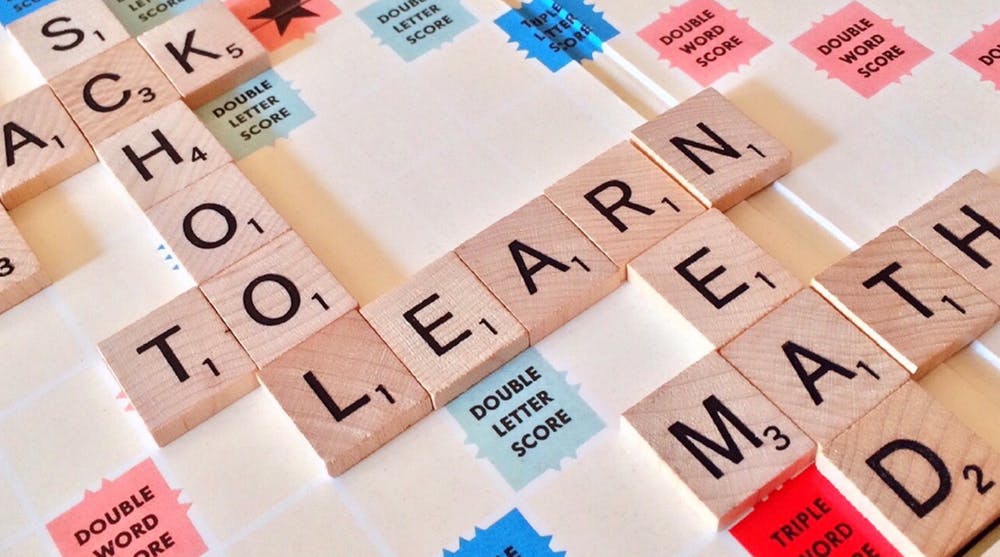Swimming or To Swim?
I like swimming.
I like to swim.
Which sentence is correct? What is the difference between to swim and swimming? When do we use ‘to swim’ and when do we use ‘swimming’?
どちらの文が正しいのでしょうか。 ‘to swim’と‘swimming’の違いは何でしょうか。 また、どういう時に‘to swim’と‘swimming’を使い分けるのでしょうか。
These are common questions by English language learners. Well before we go on answering all these questions, remember this: ‘Swimming’ in this sentence, is what we call Gerund. ‘To swim’ is what we call Infinitive.
これは英語学習者に共通する疑問として挙げられています。先程挙げた例文が良い例です。 この文では‘swimming’を動名詞といい、‘to swim’を不定詞といいます。
この記事のもくじ
動名詞と不定詞の使い分け:動名詞
What is a Gerund? A gerund is a noun made from a verb by simply adding –ing. Going, Eating, Hiking. Remember that all Gerunds end in –ing, however it’s confusing to identify a Gerund in a sentence since it looks exactly like the present participle. Let’s look at this sentence:
動名詞とは? 動名詞とは、動詞に-ingが付いた形のものです。(例. Going,Eating,Hiking) 動名詞は全て-ingの形で終わります。 ただし、現在分詞と形が似ているので、混乱するかもしれません。 次の例文を見てみましょう。
Eating in class is not allowed. (Gerund)
I am eating in class. (Infinitive)
Eating in the first sentence is a Gerund. Here it is the subject of the sentence and thus it functions as a noun and not a verb.
最初の文は、動詞を主語として使われているので動名詞になります。ここでは「食事」と訳します。
On the second sentence, I am eating in class, eating here is not a gerund it is a present participle. Here it is used as a tense. So remember that a Gerund is a noun that looks like a verb.
二つ目の文は、現在分詞となります。ここでは時制を用いています。 覚えておいて欲しいのは、動名詞は名詞であるということです。
To answer the question of when are we going to use the Gerund like in our first example, I like swimming. Let’s take a look at these three simple rules:
最初の例文を用いて動名詞の解説をします。
Subject = Gerund(主語=動名詞)
Use a gerund when you need an action to be the subject of your sentence
動名詞は、主語として動作を表す時に用います。
For example:例文
Reading is my favorite hobby.
Learning English is fun.
The infinitive or the to + verb form can also be the subject of a sentence but it’s too formal and it’s not common.
不定詞またはto+動詞も文の主語になるのですが、主にフォーマルな場で用います。
Preposition + Gerund(前置詞+動名詞)
After a preposition, use a gerund.
For example:例文
Thank you for helping me.
In this sentence, we have the preposition for before the gerund helping.
この文は動名‘helping’の前に前置詞‘for’の形が続きます。
I thought of going to the beach.
The gerund ‘going’ after the preposition ‘of’.
前置詞‘of’の後に動名詞‘going’の形が続きます。
Verb + Gerund(動詞の原形+動名詞)
You can use the gerund after the main verb. However, an infinitive can also do this. So how do we know which one to use after a certain verb? As a rule, we use the gerund after the following verbs: appreciate, avoid, dislike, enjoy, finish, keep, miss, quit. These are not all the verbs but these are the most common ones.
動詞の原形の後に動名詞を用いることもできます。 この場合は不定詞も同様に用いることができます。 特定の動詞の後に何を用いたらいいのでしょうか。 一般的に、以下のような動詞(appreciate, avoid, dislike, enjoy, finish, keep, miss, quit等)は、動名詞として用います。 この動詞が全てではありませんが、主に使われる動詞です。
For instance, this sentence:
例えばこの例文
I enjoy watching movies.
The gerund ‘watching’ after the main verb ‘enjoy’.
主動詞‘enjoy’の後に動名詞‘watching’の形が続きます。
I keep asking her out.
The gerund ‘asking’ after the main verb ‘keep’.
主動詞‘keep’の後に動名詞‘asking’の形が続きます。
So remember that these verbs MUST be followed by a gerund.
これらの動詞は動名詞の後に続きます。
But don’t forget that there are some verbs that take either a gerund or an infinitive. These common verbs include: like, love, hate.
次の動詞は動名詞でも不定詞でも意味は変わりません。(like,love,hate)
Which one is correct: I like swimming or I like to swim? Well, both are correct since the verb use in both sentences is “like”.
どちらの文が正しいのでしょうか。 実はとちらも正しい文です。
You can say I love learning English. I love to learn English. Both of these are correct without a change in meaning.
“I love learning English”“I love to learn English”も両方正しい言い方です。意味は一緒になります。
動名詞と不定詞の使い分け:不定詞
On the other hand, infinitive has this form: ‘to + base form’ of the verb. For example: to go, to rise, to play. When do we use infinitive? Let’s bear in mind these three simple infinitive rules:
それに対して不定詞は‘to+動詞の原形’の形を用います。 例えば、to go, to rise, to playといったものです。 不定詞はどのような時に使うのでしょうか。 次の3つの例を用いて不定詞の用法について覚えましょう。
Adjective + infinitive(形容詞+不定詞)
After an adjective, it is common to use an infinitive. A gerund is possible in some cases, but an infinitive is usually the better choice. So adjectives like sad,happy, glad, fun, pleased, relieved, surprised are usually followed by an infinitive.
形容詞の後は、不定詞を用いるのが一般的です。動名詞はいくつかの場面で用いることができますが、不定詞を通常用います。 例えば、sad,happy, glad, fun, pleased, relieved, surprised のような形容詞は通常、不定詞の後に続きます。
For example:
例えば、
She was sad to know that you are leaving.
The infinitive ‘to know’ after the adjective ‘sad’.
形容詞’sad’の後に’to know’の形が続きます。
I was happy to help them.
‘to help’ after the adjective ’happy’.
形容詞 ‘happy’の後に’to help’の形が続きます。
Noun + Infinitive(名詞+不定詞)
If the main verb has an object that is a noun or a pronoun, it is almost always followed by an infinitive instead of a gerund.
もし動詞に名詞または代名詞のような目的語が続く場合、動名詞の代わりに不定詞を通常用います。
For example:
例えば、
Did you want me to call you?
To call here is the infinitve after the pronoun me, which is the object of the main verb.
ここでは代名詞’me’の後に’to call’を用い、主動詞の目的語になります。
Another example:
もう一つ例文を挙げます。
The kids asked their mother to play with them.
The infinitive ’to play‘ after the noun mother, which is the object of the main verb asked.
不定詞’to play’が名詞’mother’の後に続き、主動詞’asked’の目的語になります。
Verb + Infinitive(動詞+不定詞)
As a rule, these verbs MUST be followed by an infinitive: ask, decide, encourage, expect, hope, intend, learn, plan, seem, tell, want.
一般的に、以下の動詞は不定詞の形をとります。 (ask, decide, encourage, expect, hope, intend, learn, plan, seem, tell, want)
There are more of these verbs, but I’m just including these since these are the most commonly used.
If you guys want a list of what verbs should be followed by a Gerund or an Infinitive, try typing into any search engine for a complete list.
この他にも動詞がありますが、一般的に使用されるものを挙げています。
動名詞または不定詞の用法をもっと知りたいのであれば、ぜひ検索してみてください。
So anyway, going back, here’s an example:
例文に戻りましょう。
I plan to go to Hawaii next week.
Here we have the infinitive ‘to go’ after the main verb ‘plan’.
主動詞’plan’の後に不定詞’to go’の形が続きます。
Let’s have another:
他の例文を挙げてみましょう。
I seem to have lost my bag inside the airport.
The main verb ’seem’ followed by the infinitive to have.
動詞’seem’の後に不定詞’to have’の形が続きます。
動名詞と不定詞の使い分けのまとめ
Also, an important thing to remember is that a gerund and an infinitive cannot go together in a sentence.
This is a very common ESL mistake .You cannot say:
覚えていただきたいのは、動名詞と不定詞は一緒に使えないと言うことです。
これは第二言語習得者によく起こしやすい間違いです。以下は間違った言い方です。
I like to swimming. (×)
I love to hearing you sing. (×)
These are absolutely wrong. Okay? Gerunds and infinitives are enemies; they are not friends.
これらの文は間違っています。 動名詞と不定詞はライバルなので、一緒に使うと喧嘩してしまいます。
I know it’s going to be hard at first to actually perfect the use of gerund and infinitive but with more practice, it’ll get easier. So practice more and remember that I like swimming and I like to swim are both correct.
動名詞と不定詞を完璧に使いこなすのは最初は難しいと思います。 でも、何度も練習すれば、分かってくると思います。
















